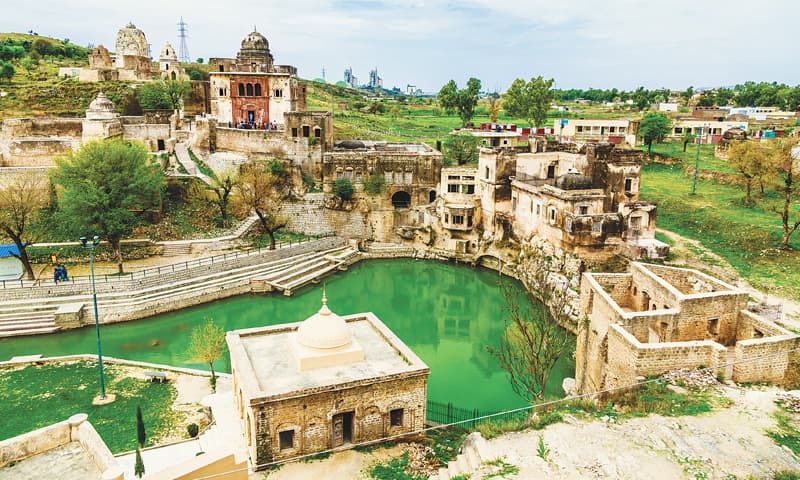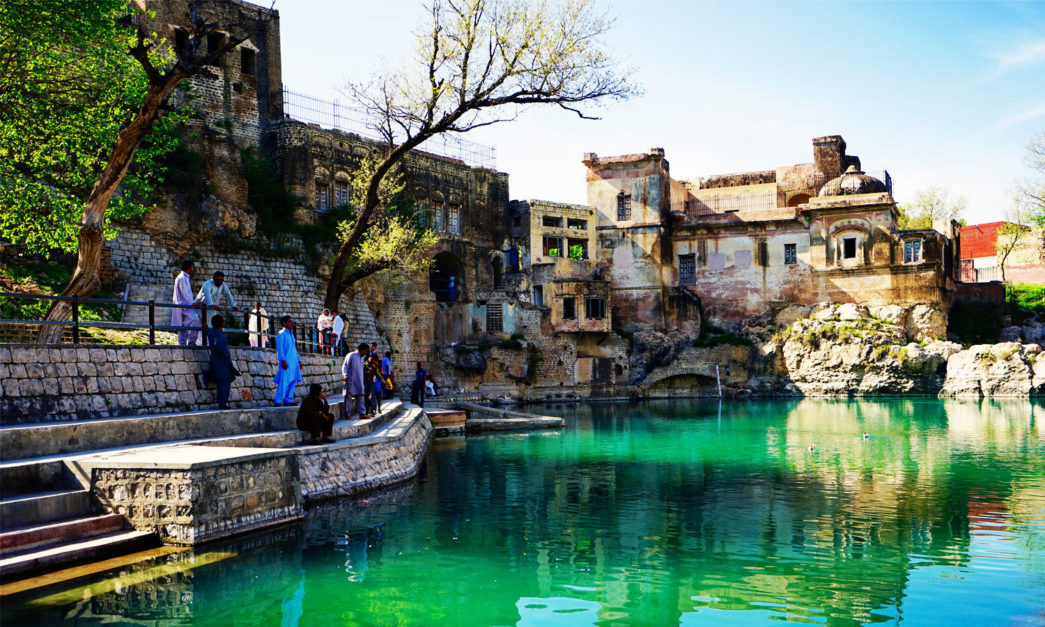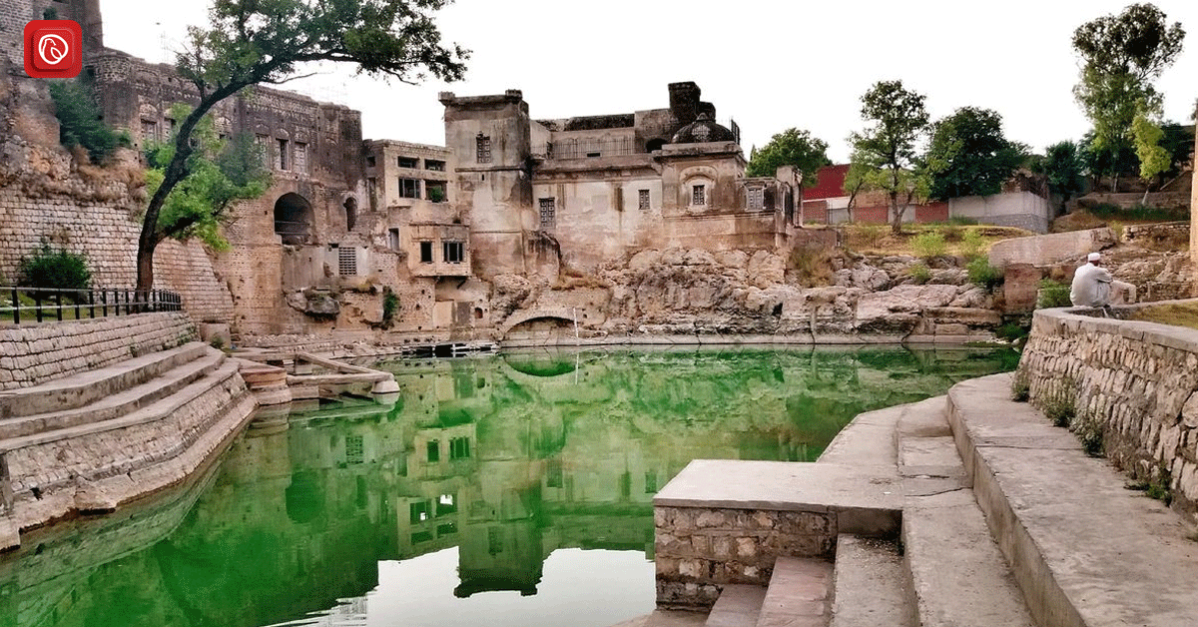Pakistan is a country rich in culture and history. Apart from the scenic beauty, Pakistan is also known for its historical sites, including Hindu temples. Katas Raj temples are one such example that can be found in the Punjab province.
Graana.com brings you a guide to Katas Raj Temple.
Overview of Katas Raj temple
The Katas Raj temple is located close to Chakwal in Punjab, Pakistan. It is devoted to Lord Shiva and dates back to the Hindu Shahi between 615 and 950 AD.
Furthermore, this site holds immense importance as a place of worship for Hindus in Pakistan. It is actively utilized not only by the local Hindu community but also by annual visitors from other countries.
Location of the Katas Raj Temple

The Katas Raj Temple is located in Choa Saidanshah, which is a part of the municipal committee. The complex of the Katas Raj Temple can be found close to Kallar Kahar, at an elevation of around 600 meters (2,000 feet).
The Tilla Jogian complex, also considered an important Hindu pilgrimage destination, is located around 100 kilometers distant by vehicle. Off the M2 Motorway, which connects Islamabad and Lahore, the city of Katas Raj can be found close to the interchange that serves the town of Kallar Kahar.
Also, the complex can be found close to the community of Dulmial and is situated next to the road that leads from Kallar Kahar to Choa Saidan Shah.
Katas Raj temple History

Pandawa Brothers
People say that site was visited by the Pandawa brothers, famous for the story “Mahabharta,” and that this complex of temples was built to honor their presence. It is stated that this is the region where the Pandavas resided while exiled, as well as the location where the series of questions took place between the Pandavas and the Yakshahs took place.
Also, history claims that Pandavas abided in the region where the Sath Ghara, also known as the Seven Temples, was located while exiled for twelve years. It is said in a Brahmanical narrative that Shiva’s inconsolable grief over the death of his wife Sati caused a pond of tears that produced two pools of water, one at Pushkara near Ajmer and the other at Katas. One of these pools of water is located at this location.
Overview of other Temples
Moreover, 900 years ago, the smaller temples built in pairs around the enormous central temple were constructed. The earliest of the minor temples dates back to the latter half of the 6th century AD. When the Hindu population moved away to East Punjab in 1947, the temple complex was left in disrepair since no one remained to care for it.
Relationship with Population
Very positive relationships existed between the local Muslim population and the Hindu community. Muslims from the surrounding area traveled to the next town, Choa Saiden Shah, from where the Katas Hindu population continued to India.
People who follow the Hindu religion in northern Punjab have journeyed to this holy location for as long as anyone can remember. It is said that Shiva spent the years of his married life with Sati here. So, when Sati passed away, Shiva’s sadness overcame him, and a pond was created from his tears.
The Hindu belief states that swimming in the pond leads to the forgiveness of sins and helps one gain salvation. Therefore, the pilgrims bathe in the sacred pool to seek forgiveness for their transgressions. Even in modern times, devotees of the many different Hindu faiths journey to the mandir.
The architecture of Katas Raj Temple
Firstly, history says that before it became a Hindu temple, the site was home to a Buddhist stupa. Alexander Cunningham, the inaugural Director General of the Archaeological Survey of India, described this structure in 1872-73 CE.
The architecture of Katas Raj Temple, known for its historical significance, corroborates the account given by the seventh-century CE Chinese pilgrim XuanXang. XuanXang, who traversed this region, documented numerous Buddhist sites on the subcontinent.
The complex of seven temples at the highest point on the site is the most crucial feature of the monument. It follows the architectural style of the Kashmiri temples of the Karkota and Varma dynasties who ruled from 625-939 CE.
These dynasties dominated Kashmir between the years 625 CE and 939 CE. Most temples discovered throughout the Salt Range foothills share distinguishing traits. These traits include dentiles, trefoil arches, fluted pillars, and pointed roofs. The primary component of the structure is a plaster-coated soft sandstone that serves as the foundation.
Katas Raj contains a collection of structures and ruins. They run in an unbroken line from the Buddhist era to British control. So, it has preserved at least 1500 years of history in that particular place. This is because the line of these buildings and ruins never breaks.
Legends surrounding the Katas Raj Temples
According to Hinduism, Lord Shiva wept so much after the death of his wife that his tears formed two sacred ponds. One is in Ajmer, and the other is in Kataksha, now more commonly called Katas. Katas is translated as “raining eyes” or “chain of tears.” Katas are a form of yoga in Sanskrit.
The Hindu religion has the belief that to have one’s sins forgiven, one must take a dip in a pond on a specific day. If you are fond of historical sites in Pakistan, we suggest you visit Katas Raj temples.
For more informative content, visit the Graana blog.




